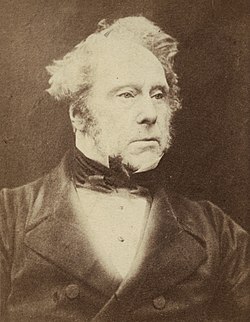Top Qs
Timeline
Chat
Perspective
1865 United Kingdom general election
From Wikipedia, the free encyclopedia
Remove ads
The 1865 United Kingdom general election was held 7 July 1865 to 24 July 1865 to elect 658 members of the House of Commons. It saw the Liberals, led by Lord Palmerston, increase their large majority over the Earl of Derby's Conservatives to 80.
Palmerston died in October the same year and was succeeded by Lord John Russell as Prime Minister.[1] Despite the Liberal majority, the party was divided by the issue of further parliamentary reform, and Russell resigned after being defeated in a vote in the House of Commons in 1866, leading to minority Conservative governments under Derby and then Benjamin Disraeli.
This was the last United Kingdom general election until 2019 where a party increased its majority after having been returned to office at the previous election with a reduced majority.
Remove ads
Corruption
The 1865 general election was regarded by contemporaries as being a generally dull contest nationally, which exaggerated the degree of corruption within individual constituencies. In his PhD thesis, Cornelius O'Leary described The Times as having reported "the testimony is unanimous that in the General Election of 1865 there was more profuse and corrupt expenditure than was ever known before".[2] As a result of allegations of corruption, 50 election petitions were lodged, of which 35 were pressed to a trial; 13 ended with the elected MP being unseated. In four cases a Royal Commission had to be appointed because of widespread corrupt practices in the constituency.[3]
As a result, when he became Prime Minister in 1867, Benjamin Disraeli announced that he would introduce a new method for election petition trials, which were then determined by a committee of the House of Commons, resulting in the Parliamentary Elections Act 1868, whereby two Judges of the Court of Common Pleas, Exchequer of Pleas or Queen's Bench would be designated to try election petitions with full judicial salaries.[3]
Remove ads
Constituencies
Many new constituencies were used for this election:
Results
Summarize
Perspective

Voting summary
Seats summary
Regional results
Great Britain
England
Scotland
Wales
Ireland
Universities
Source: Rallings & Thrasher 2012, pp. 8–9
Remove ads
See also
Notes
- The seat and vote count figures for the Liberals given here include the Speaker of the House of Commons
References
Sources and further reading
External links
Wikiwand - on
Seamless Wikipedia browsing. On steroids.
Remove ads




